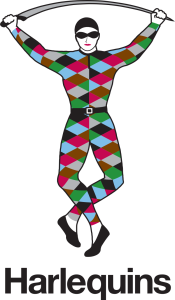Intelligence Hub
For Leaders on the Field
Keep the world of high performance at your fingertips, with exclusive insight and intelligence direct from the frontline of high performance.
The high performance world continues to change, and the demand on performance environments to manage time and resource will continue to increase, so knowing where to go to develop the knowledge, networks and skills that will lead to more impactful performance solutions, will become even more important.
Events
Join us at out events and discover people and ideas to progress your thinking further, by delving deep into everything there is to know about global high performance across all sports.
17 Apr – 18 Apr 2024
Leaders Meet: Teaching & Coaching
Millfield School, Somerset
12 Jun – 13 Jun 2024
The Sport Performance Summit Los Angeles
Red Bull, Santa Monica, Los Angeles
23 Jul – 25 Jul 2024
NBPA Performance Summit
Higueron Hotel Malaga, Curio Collection by Hilton, Andalucìa, Spain
13 Nov – 14 Nov 2024
The Sport Performance Summit London
London
Plug into the Collective Knowledge of your Peers
From weekly topic-led discussions and case studies, and sessions to hone leadership skills, supported by research and learning stimulus, to exclusive, confidential and structured group discussions for the world’s elite.
25 Apr 2024
Fostering Creativity in Your Environment
Time Zone: UK, Europe & Australasia
25 Apr 2024
Case Study Session: Fuelling High Performance
Time Zone: UK, Europe & North America
30 Apr 2024
Performance Support Series: Wellbeing – What’s Having the Most Impact? (Part Three)
Time Zone: UK, Europe & North America
8 May 2024
Performance Support Series: Exploring Culture & Change (Part One)
Time Zone: UK, Europe & Australasia
16 May 2024
Leadership Skills Session: Managing Key Transitions
Time Zone: UK, Europe & North America
21 May 2024
Innovating With Limited Resource
Time Zone: UK, Europe & Australasia
30 May 2024
Measuring Impact of Mental Skills
Time Zone: UK, Europe & North America
6 Jun 2024
Performance Support Series: Exploring Culture & Change (Part Two)
Time Zone: UK, Europe & Australasia
20 Jun 2024
Functioning Effectively as a Multidisciplinary Team
Time Zone: UK, Europe & North America
26 Jun 2024
Leadership Skills Session: Effective Debriefing Skills
Time Zone: UK, Europe & Australasia
9 Jul 2024
Member Case Study: Inflection Moments – Future Proofing Your Organisation
Time Zone: UK, Europe & North America
18 Jul 2024
Performance Support Series: Exploring Culture & Change (Part Three)
Time Zone: UK, Europe & Australasia
24 Jul 2024
Member Case Study: Managing Crisis in High Performing Sports Organisations
Time Zone: UK, Europe & North America
30 Jul 2024
Leadership Skills Session: Improvisation for Strategy
Time Zone: UK, Europe & Australasia
13 Aug 2024
Performance Support Series: Advances in Performance Analysis (Part One)
Time Zone: UK, Europe & North America
22 Aug 2024
How Data & Analysis is Influencing In-Game Decision Making
Time Zone: UK, Europe & Australasia
28 Aug 2024
Leadership Skills Session: Growing Cohesion at Pace
Time Zone: UK, Europe & North America
5 Sep 2024
Member Case Study: Creativity & Adaptability – Learning from Parasport Programmes
Time Zone: UK, Europe & Australasia
12 Sep 2024
Performance Support Series: Advances in Performance Analysis (Part Two)
Time Zone: UK, Europe & North America
19 Sep 2024
Leadership Skills Session: Leading Effective Meetings – How to Structure & Chair
Time Zone: UK, Europe & Australasia
24 Sep 2024
Designing Environments for Women Athletes to Thrive
Time Zone: UK, Europe & North America
17 Oct 2024
Performance Support Series: Advances in Performance Analysis (Part Three)
Time Zone: UK, Europe & North America
22 Oct 2024
Performance Support Series: TBC: How to Approach Innovation (Part One)
Time Zone: Australasia
5 Nov 2024
Evolutions in the Identification of Talent
Time Zone: UK, Europe & North America
21 Nov 2024
Performance Support Series: TBC: How to Approach Innovation (Part Two)
Time Zone: Australasia
26 Nov 2024
Leadership Skills Session: Habits of Disruption – Shaking Things Up
Time Zone: UK, Europe & North America
5 Dec 2024
Performance Support Series: TBC: How to Approach Innovation (Part Three)
Time Zone: Australasia
11 Dec 2024
Creating Impactful Learning Environments for Athletes
Time Zone: UK, Europe & North America
17 Dec 2024
What Trends Will We See in 2025?
Time Zone: UK, Europe & Australasia
Members

Head Coach, Chelsea Football Club Women

Football Director, Manchester United FC

Assistant Coach, Brooklyn Nets

Vice President Athlete Care, Philadelphia 76ers

Senior Vice President, Football Operations, NFL

Assistant Coach, Adelaide Crows FC

Head Coach, Welsh Rugby Union

Director of Performance, UK Sport

Head Coach, Harlequins RFC

Director of Sport, INEOS


Become a member of unrivalled network that spans all sports and every aspect of high performance and gain the confidence that you’re developing the knowledge, networks and skills that will lead to more impactful performance solutions and push your career forward at pace.
To ensure you’re keeping up to date with the latest intelligence, sign up (for free) to receive newsletters. Get exclusive insight from top organisations worldwide on leadership & culture, human performance, coaching & development and data & innovation.